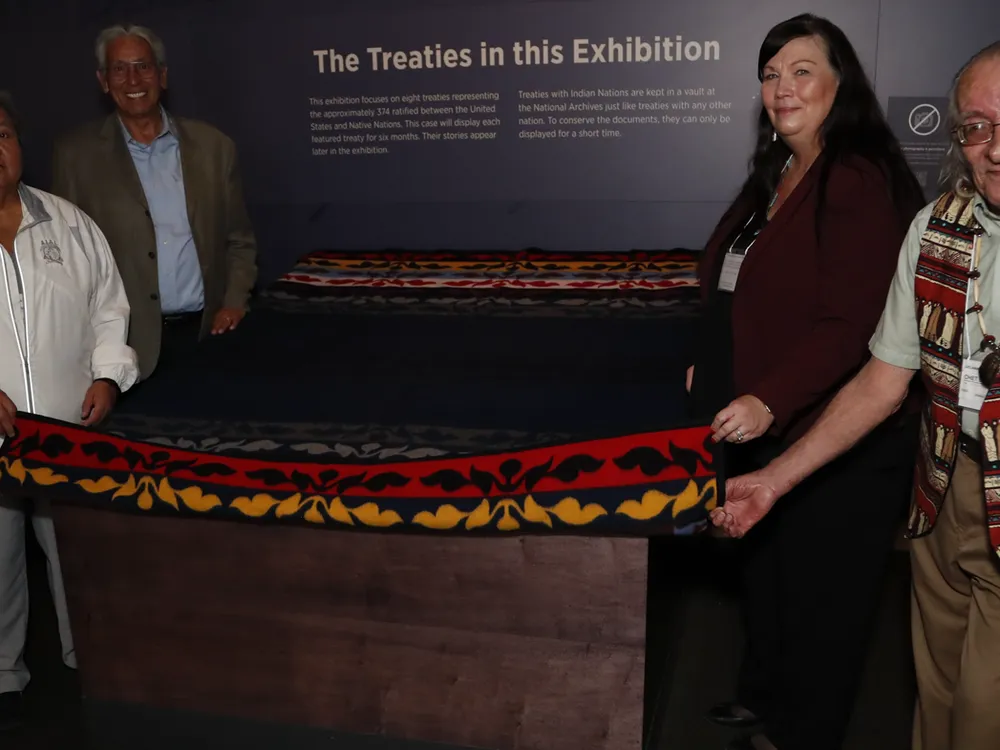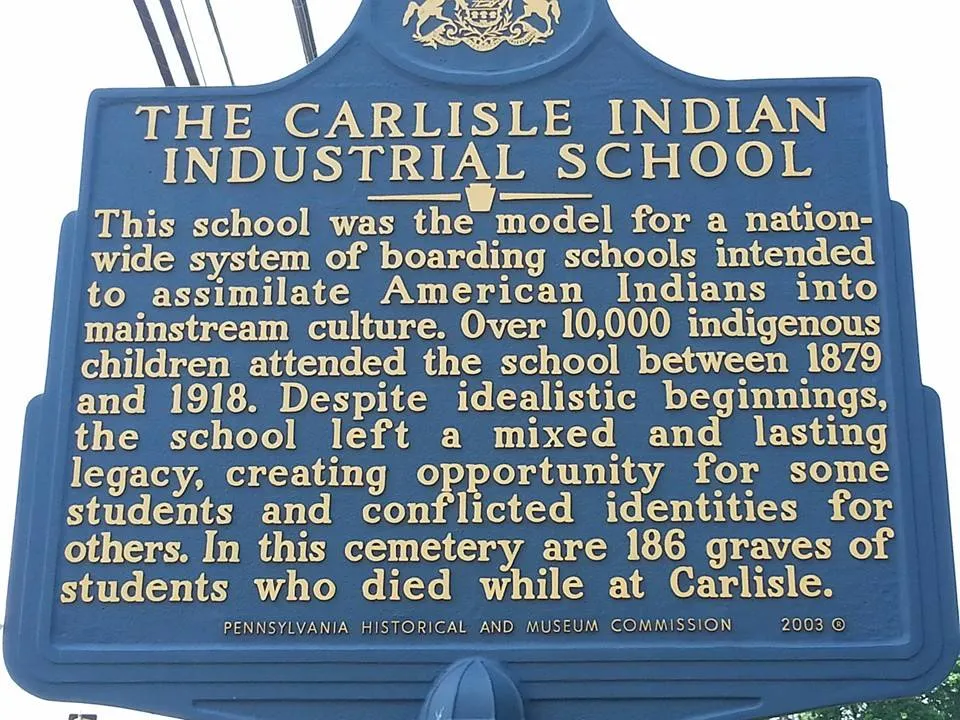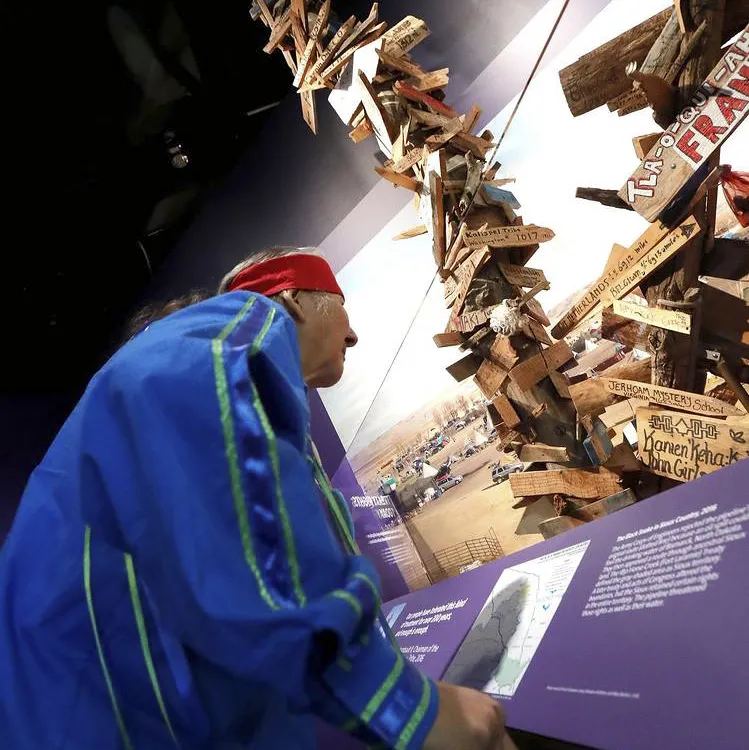NATIONAL MUSEUM OF THE AMERICAN INDIAN
Native Rights Are Human Rights
Remembering the humanity of Indigenous peoples on International Human Rights Day
/https://tf-cmsv2-smithsonianmag-media.s3.amazonaws.com/filer_public/54/8b/548b8a12-e1c7-44ed-9011-9a38e112348d/3_amigos_at_capitol.jpg)
On December 10, 1948 the United Nations General Assembly adopted and announced the proclamation of the Universal Declaration of Human Rights (UDHR), the first global decree of human rights. As a result, International Human Rights Day is observed and celebrated annually across the world on December 10th every year. This year’s theme is equality and it specifically calls on society to address the rights of Indigenous peoples, among other vulnerable populations.
Native people historically have faced epic oppression and violations of their human rights. When the first Europeans came to the Americas, it was inhabited by millions of sovereign Indigenous peoples. As more settlers arrived, Native people were relentlessly pushed out of their homelands. After the founding of the United States, laws were made to legally support expansion into Native lands at the expense of Native people. From 1778 to 1868, approximately 368 treaties were made between the United States and Indian nations. By 1900, all of those treaties had been broken.

Each time a treaty was made, Native people lost more land. Removal forced Native people to relocate to strange and unfamiliar lands where they were challenged to survive. During the 1800’s reservations were established, depriving Natives Peoples access to the basic democratic principles of life, liberty and the pursuit of happiness. While confined to reservations, the 1883 Religious Crimes Code attempted to strip Native people of First Amendment protections of freedom of religion by banning ceremonies and religious practices. This made it legal for Indian reservation agents and superintendents to confiscate or destroy Native religious objects.

At the same time, Native children as young as four years old were institutionally kidnapped by government and Christian entities with the intent to reeducate them towards assimilation, so that they could become “good Americans.” In these boarding schools, Native children were forced to abandon their Native customs and languages. Under the care of the U.S. government and Christian guardianship, thousands of Native children died with no accountability to their parents.
Since contact, Native people have died at epidemic rates due to disease, removal, war, abuse, natural causes and attempted genocide. Entire tribes ceased to exist and are now considered extinct. A once thriving Native population of tens of millions was reduced to a mere 250,000 by 1900. It wasn’t until 1917 that the Native death rate finally slowed to catch up with their birth rate, and the Native population began to slowly increase. With the Native populations growing, Indigenous peoples around the world have worked with their allies to advocate for the global recognition of their basic human rights.
Their efforts led to the creation of the 2007 UN Declaration on the Rights of Indigenous Peoples. This declaration sets out the minimum level of human rights protections that Indigenous Peoples domestically and internationally need to exist, survive and flourish. In April 2021, Secretary of the Interior Deb Haaland (Pueblo of Laguna), addressed the UN Permanent Forum on Indigenous Issues to reaffirm the current administration’s commitment to support the UN Declaration on the Rights of Indigenous Peoples by advancing Indigenous peoples’ rights at home and abroad.
The continuing COVID-19 pandemic and its variants have highlighted the continuing plight of Indigenous peoples’ human rights. Within the boundaries of the United States, Native communities grapple with transportation difficulties and limited access to electricity, safe water, the internet, law enforcement protection and health facilities. This reflects the unbalanced poverty that many Native people still live in today, bringing into question how such conditions continue to exist in a nation that prides itself as a protector of human rights.
The media and law makers are slowly beginning to address current issues important to Native peoples and their right to existence. Social media has also served as a forum for Native citizens to share human rights concerns. In addition, the Native American Rights Fund (NARF), serves as an advocate to represent Native peoples in “enforcing laws regarding rights to equal protection and to be free from discrimination in voting, education, incarceration, and religion. NARF also helps develop laws that provide unique protections for Native collective rights, traditions, culture, and property such as sacred places, peyote, eagle feathers, burial remains, and funerary objects.”

Other Native law advocates and activists are also diligently working on numerous human rights issues that include missing and murdered Indigenous women, violence against women and children, protection of sacred sites, educational and health disparities, crime in Indian Country, poverty and homelessness, treaty recognition, language and cultural loss, voting rights, water rights, taxation jurisdiction, climate change, employment and housing discrimination, oil pipelines across Native lands, Native misrepresentation and cultural appropriation, and the continuing effects of the Covid-19 virus and its variants.
Recently, the National Museum of the American Indian updated its vision and mission statement to reflect Native social justice awareness:
Vision
Equity and social justice for the Native peoples of the Western Hemisphere through education, inspiration, and empowerment.
Mission
In partnership with Native peoples and their allies, the National Museum of the American Indian fosters a richer shared human experience through a more informed understanding of Native peoples.
